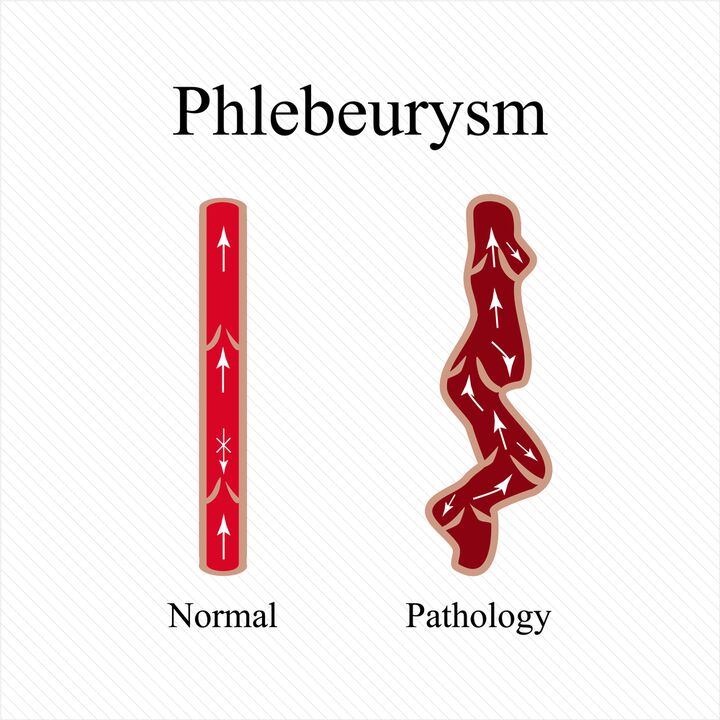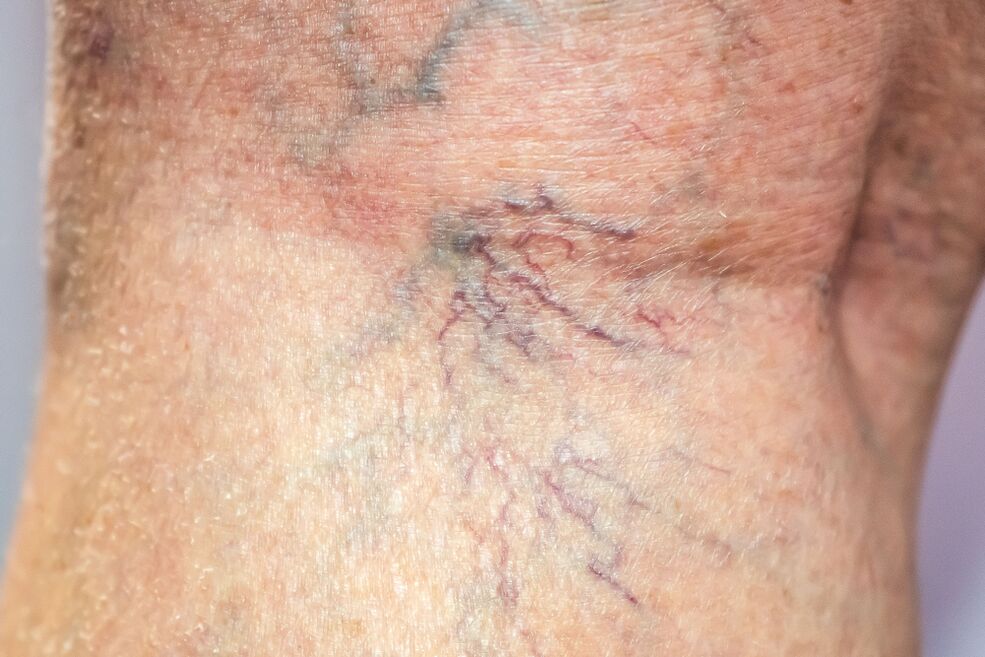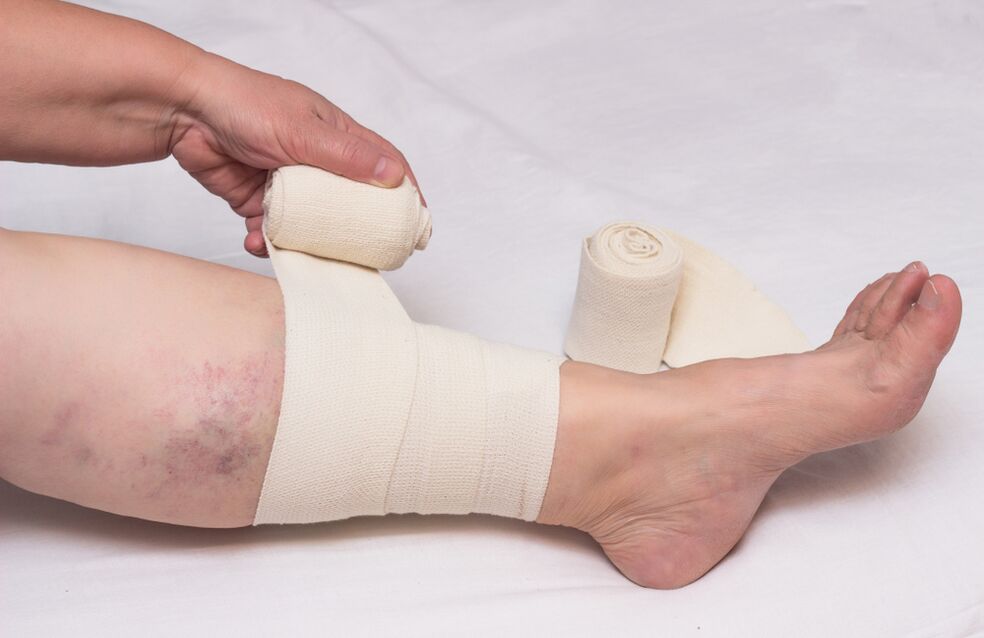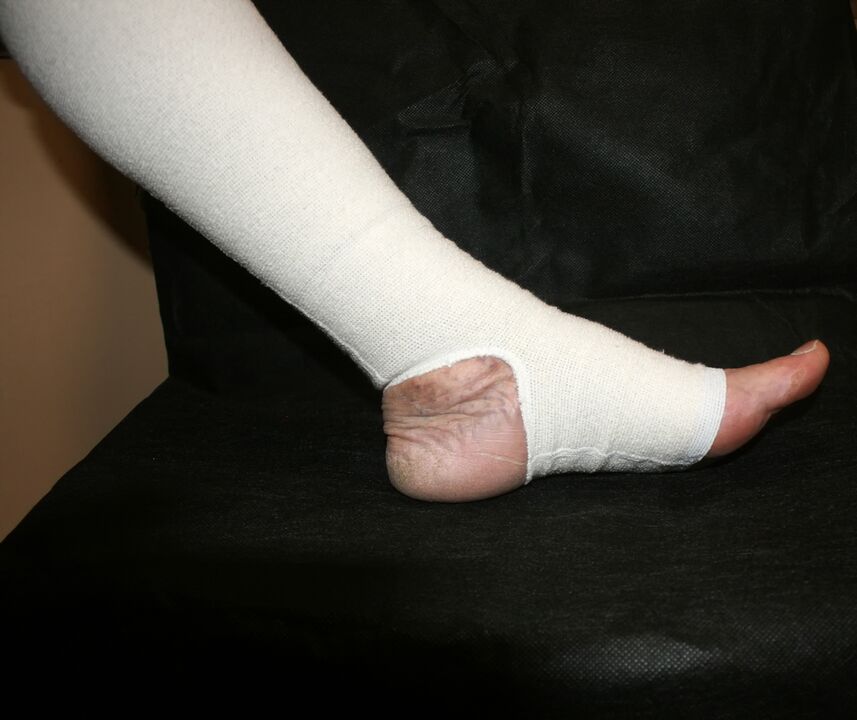Varicose veins from lower legs are persistent and irreversible expansion and prolonged veins, which are due to rough changes in their walls, as well as lack of their valve due to genetic defects.
Women's predisposition is explained by increased cycle in the vein wall extension with increased hormone progesterone concentration.

Reason
The main factor in varicose veins is the weakness of the vascular wall descent.
In addition, the human lifestyle is very important in pathogenesis:
- long work, stand or sit;
- lack of normal physical energy;
- heavy lifting;
- Acceptance of estrogen -Contains drugs.
The risk of varicose veins from lower leg veins increases with age.But more and more patients are younger than 30 years old.
Manifestations of varicose veins
Often, with varicose veins, the patient is worried about the feeling of severity, rupture, heat, itching -skin, "anxiety" in the legs and pain, pulsating pain in the calf muscles.The features of these signs are their appearance after a prolonged position.As a rule, unpleasant sensations -actually passing or their intensity decreases significantly while walking, in a position to lie down, after a night's rest or when using a medical compression product.
An important sign of the disease is cramps in the calf muscles, usually at night.
Subcutaneous veins develop in the form of convincing blue conglomerate along the lower leg and thighs.Unfortunately, there is an opinion that vascular stars are a manifestation of varicose veins.But it should be noted that this is not the absolute sign of the disease and in many cases cosmetic problems alone.Such signs can be on the skin with varicose veins, but for the most part, it is also available in healthy people.
As the varicose veins develop, the infringement of the lower skin of the skin develops.Initially, excess coloring area occurred, slightly later subcutaneous tissue and compacted skin, the second acquired "lacquered" features.In the middle of the skin that is painted, in response to a minimum injury, small white areas resemble Starin drops.This is a white atrophy called, after which trophic ulcer is opened.
Skin infringement is a sign of chronic vein deficiency, which also includes symmetry edema in the feet.

Diagnostics
Ultrasound scanning (color duplex scanning; triplex scanning) - "gold standard" in diagnosis of varicose veins from the lower leg.Ultrasound experts should have checked the foot vessels on both sides.He assesses his diameter, compression, characteristic blood flow and reflux value (inverted blood flow).The evaluation of the VA valve work is performed not only in the patient's position while lying, but also standing.
Treatment of varicose veins from lower leg
The same symptoms can be a sign of various diseases, and the disease may not occur according to the textbook.Don't try to treat yourself - consult your doctor.
Modern treatment of varicose veins includes surgical intervention, sclerotherapy, compression treatment and the use of various drugs.
Operation
Surgical treatment is the only method of improving the quality of life, reducing the risk of complications and the possibility of relapse of the disease.It consists of removing varicose veins.There are 2 types of interventions:
- Thermal prison - a minimally invasive (without cuts) treatment method using laser or radio frequency sensors;
- Traditional surgical intervention involves the isolation of varicose veins.Currently, such intervention techniques are quite done and allow you to get good and cosmetic results.
Separately considered sclerotherapy as a method of surgical treatment.It successfully completes, and in some cases (early stages of varicose veins) replacing surgery.This procedure is the introduction of a special drug into the varicose vein, which symbolizes it from the inside.
Varicose vein compression treatment
Elastic bandage: Advantages and disadvantages
Compression therapy is a compulsory component of any method of treating varicose veins and the most effective method for preventing it.
For compression treatments, elastic bandages are most commonly used, which, depending on the level of stretching, is divided into 3 classes:
- short (overlapping wraps of no more than 70 % of the initial size);
- Average (the initial increase in the initial length with the stretching in the range of 70-140 %);
- Length (140 % and higher).
Classes are mandatory shown on wrapping packaging, and they are the necessary features for the right product choice.
It is advisable to use long bandages during the nearest postoperative period to stop blood and reliable fixation.To ensure optimal therapeutic compression regime, short and medium -sized extensions are best suited.
When using elastic bandages, the following rules should be followed:
- These bandages are used, pre -arranged "on yourself", to prevent the formation of folds in the ankle area, which can damage the skin while moving;
- Binting always starts from the toes and catches the heel;
- The pressure of the bandage must be smooth from the ankle to the thigh;
- Accidental wrap, while it is around the skin;
- Modeling the limb cylinder profile is achieved by placing foam or latex pad.
Most patients with varicose veins should use elastic bandages all day, applying in the morning before lifting from bed and shooting in the evening before the night's rest.For the treatment of trophic ulcers, multi-layer compression wraps can be used, not removed for a long time, while directly with the affected area of the lower leg is contacted by a bandage that is absorbed with drugs (zinc-wewatin and other clothing).
Despite the high efficiency, compression treatment with elastic bandages has a clear weakness - causing physical and aesthetic difficulties, in addition, it is very difficult for older people to observe themselves, observing all the rules.

Compression knitwear
Special compression knitwear gained vast popularity.It is represented by stockings to lower, middle and upper thighs, as well as tight (including special tight clothing for pregnant women) from four compression classes.
Such knitwear is made of cotton, natural rubber - elastant and synthetic rubber.Natural fibers are optimal for sensitive and affected (varicose eczema, dermatitis, trophic disorders) of the skin.For synthetic fibers, their advantage is a small diameter and a variety of colors that allow for medical knitwear with high aesthetic properties.
Varicose vein therapy
The main goal of drug therapy is the elimination of subjective symptoms of venous deficiency, as well as the prevention and reduction of the severity of side effects after surgical intervention.
One of the most commonly prescribed drugs is the drug with diosmine active ingredients.Usually, a week after the onset of its acceptance, positive dynamics appear: night cramps, pain, passing severity, swelling.It is believed that the minimum period of the course must be at least 2 months.In the form of severe varicose veins, taking the medication can continue for up to six months or more.

Ointment and gel
The simplicity of the use and generosity of ointment and gel makes it very popular among patients and doctors.A serious drawback to the use of uncontrolled local medicines is the frequency of high skin complications in the form of peeling, dermatitis and eczema caused by increased sensitivity with prolonged use of the same drug.
Therefore, it is not recommended to use local medicines (ointment, gel, cream) as a prevention and absence of symptoms of chronic vein disease.
Heparin -based products are some of the most popular remedies.Used 3-4 times a day.At the beginning of use, light skin irritation and remedy phenomena at the place of drug use are possible.
Additional
In the Russian Federation, physiotherapy treatment methods are widespread.To combat the symptoms of varicose veins from the lower leg as pain and cramps in the calf muscles, you can use the electrical muscle stimulation method.Other methods of physiotherapy do not have evidence of the effectiveness of the treatment of the disease.
Prevention of varicose veins
Rational labor and rest organizations are required for all patients in varicose veins.This category of patients is not recommended for long -term work related to standing or sitting, weight lifting, and high temperature effects.At work and at home, they need a periodic vacation of 15-20 degrees raised at a 15-20 degree angle (during sleep, it is recommended to raise the tip of the bed above the heart level), rational nutrition, excluding the use of spicy and salty foods, as well as alcohol.Weight should be strictly controlled, as obesity leads to the development of the disease.
In elastic compression, mobile sports (skiing, biking) are allowed, however, the optimum condition for venous outflow and muscle training from the lower leg is provided with swimming.
